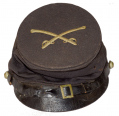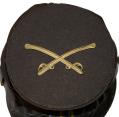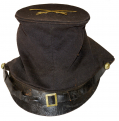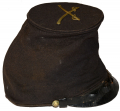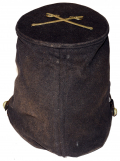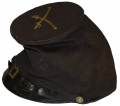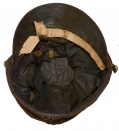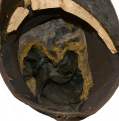site search
online catalog
MCDOWELL PATTERN FORAGE CAP WITH CAVALRY INSIGNIA
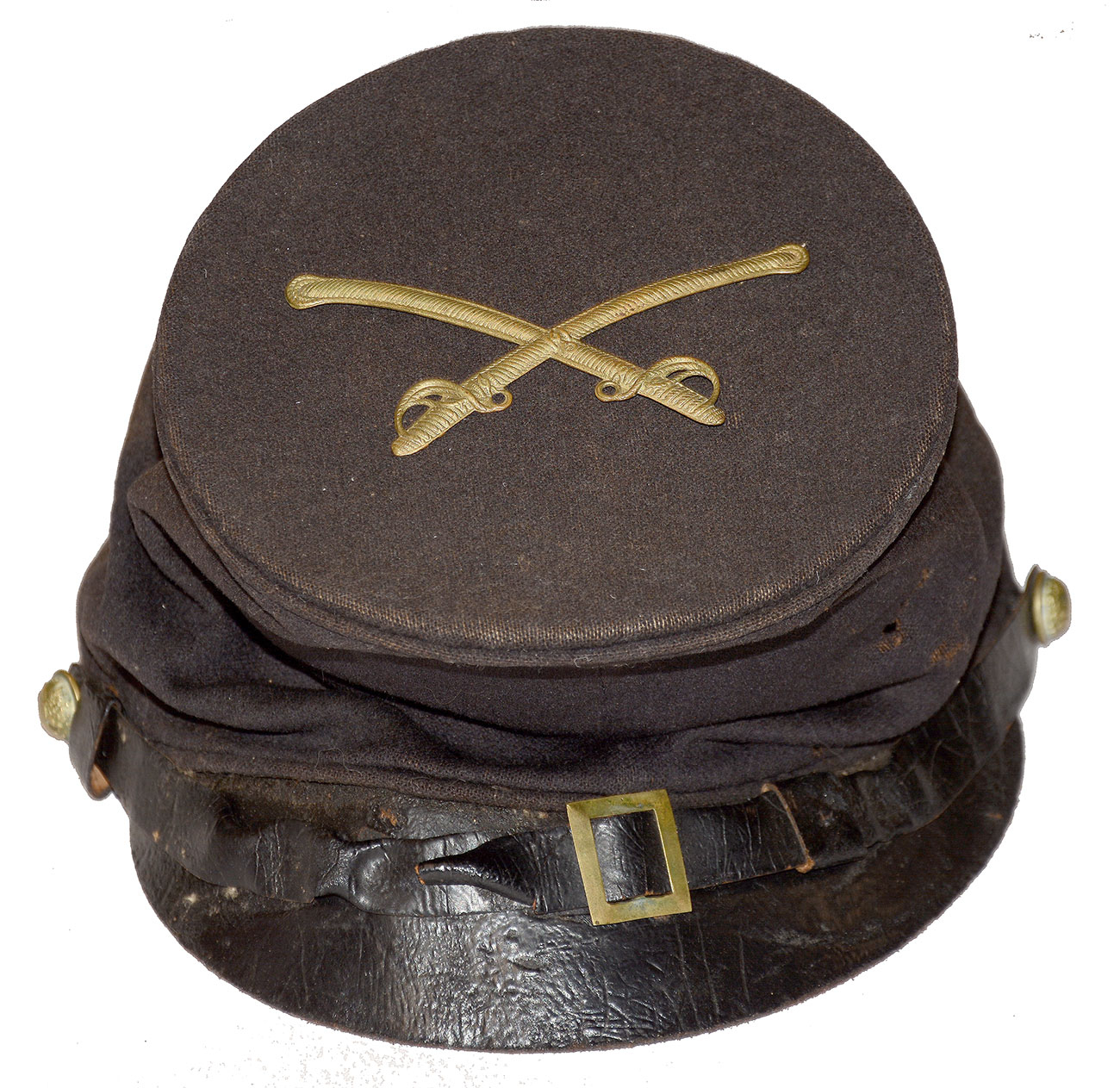
$3,000.00 SOLD
Quantity Available: None
Item Code: 1179-345
This is a good example of the “McDowell” style forage cap, showing wear and use in the field, needing some TLC, but with solid fabric, visor, chinstrap, and a good deal of its lining, including the quilted underside of the crown. Popularized early in the war by General Irwin McDowell (1818-1835,) who was perhaps a bit more inspiring in headgear than generalship, the style is characterized by the tall body, usually made without a band around the base, and downturned, crescent visor.
This shows some fading to the blue fabric from exposure to the elements, and a few thin white stains on the wearer’s right that might come out, but no holes or moth damage. The brim is in place, needs to be restitched and the sweatband is missing, though the black silk lining seems to be all there, including some of the batting on the sides and the quilted underside of the crown, showing a spiral pattern of stitching, along with some of the cardstock stiffener used along the lower front at the visor. The chinstrap is in place, secured by two small general staff buttons (pretty common on commercial caps) and is original, though showing some bends and wrinkles, likely having been pressed between the top of the cap and the visor in storage for a century or so. All in all, though, the cap is a great candidate for conservation, with the sweatband being the only restoration needed and likely to be done at the same time the visor is restitched.
The cap has a set of false-embroidered brass crossed sabers for cavalry, 3 ¾ inches wide from tip to tip, pretty much identical to those illustrated as Figure 454 in Campbell and O’Donnell American Military Headgear Insignia and dated 1855-1865. How long these have been on the cap, we can’t tell. We see no shadowing underneath, but they have a nice, subdued tone matching the cap and the early style of the sabers is in keeping with the greater popularity of the McDowell style cap earlier in the war. The pattern was one of several popular wartime styles used in commercially produced and privately purchased caps and tends to be regarded as fairly early-war with the lower crown chasseur style kepis dominating in the later years, but it was much a matter of taste. Officers purchased their own uniforms and could indulge their fashion sense to a certain degree, as could enlistedmen with some cash to spare, though perhaps within narrower limits.
This is a good example of a wartime cap in a pattern that is sought after by collectors and has some unique eye-appeal. This is well worthy of a little bit of work and TLC, should come out excellent, and should find a prominent place in any collection of Civil War headgear. [sr][ph:L]
~~~~~~~~~~~~~~~~~~~~~~~~~~~~~~~~~~~
THIS ITEM, AS WITH ALL OTHER ITEMS AVAILABLE ON OUR WEB SITE,
MAY BE PURCHASED THROUGH OUR LAYAWAY PROGRAM.
CLICK HERE FOR OUR POLICIES AND TERMS.
THANK YOU!
Inquire About MCDOWELL PATTERN FORAGE CAP WITH CAVALRY INSIGNIA
For inquiries, please email us at [email protected]
Most Popular
Historical Firearms Stolen From The National Civil War Museum In Harrisburg, Pa »
Theft From Gravesite Of Gen. John Reynolds »
Selection Of Unframed Prints By Don Troiani »
Fine Condition Brass Infantry Bugle Insignia »
British Imported, Confederate Used Bayonet »
Scarce New Model 1865 Sharps Still In Percussion Near Factory New »
featured item
HANDSOME INSCRIBED MOORE REVOLVER WITH HOLSTER OF C.H. RICHMOND
Moore revolvers used the .32 caliber self-contained metallic rimfire cartridge, which was available and convenient. They were not subject to damage by rough handling, weather resistant, and made a pistol fast to load. Moore also provided value for… (2023-2603). Learn More »
site search
Upcoming Events
May 16 - 18: N-SSA Spring Nationals, Fort Shenandoah, Winchester, VA Learn More »



